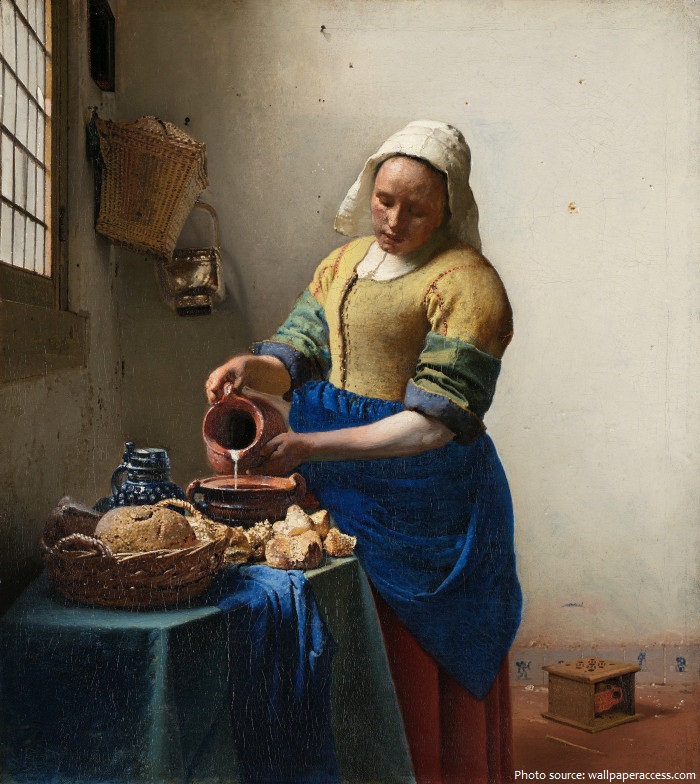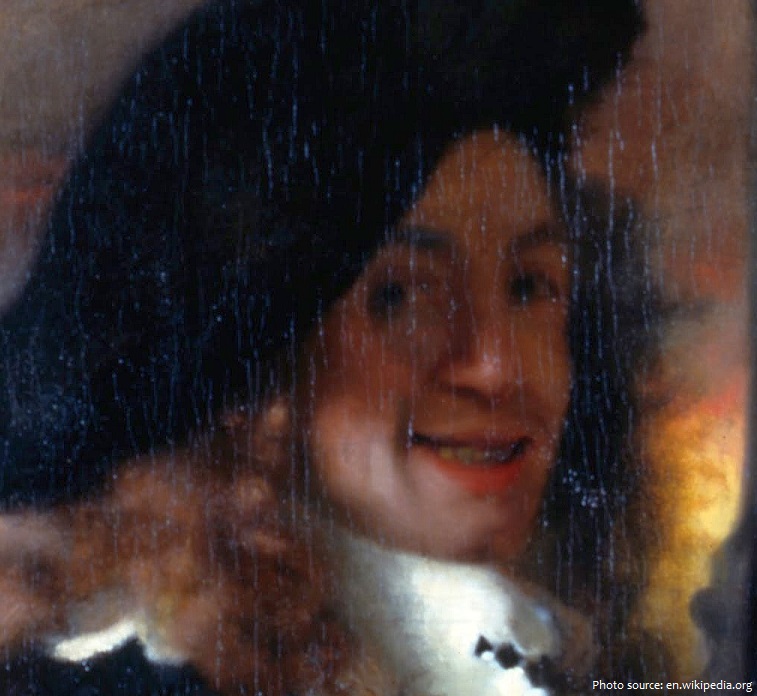
Johannes Vermeer was a Dutch Baroque Period painter who specialized in domestic interior scenes of middle-class life. During his lifetime, he was a moderately successful provincial genre painter, recognized in Delft and The Hague. Nonetheless, he produced relatively few paintings and evidently was not wealthy, leaving his wife and children in debt at his death.
Vermeer specialized in scenes of domestic life, a genre he helped catapult within the Baroque lexicon. Many of his paintings contain the same furnishings or motifs that inhabited his own private studio, and his models were often women that he knew or relatives of patrons.
He was posthumously titled the “Master of Light” due to the delicate attention he paid to express the way light played upon skin, fabrics, and precious stones in his work. His expertise stemmed from using Renaissance techniques such as chiaroscuro, mixed with his own signature utilization of light, shadow, and paint to evoke texture, depth, and emotion.
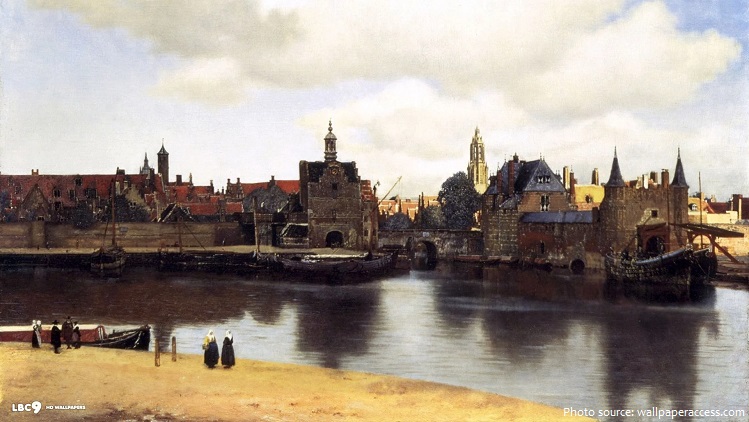
Vermeer may have first executed his paintings tonally like most painters of his time, using either monochrome shades of grey (“grisaille”) or a limited palette of browns and greys (“dead coloring”), over which he would apply more saturated colors (reds, yellows and blues) in the form of transparent glazes. No drawings have been positively attributed to Vermeer, and his paintings offer few clues to preparatory methods.
Similar to other major Dutch Golden Age artists such as Frans Hals and Rembrandt, Vermeer never went abroad. Also, like Rembrandt, he was an avid art collector and dealer.
Johannes Vermeer was born in 1632, in the city of Delft in the Netherlands. The precise date of his birth is unknown but it is known that he was baptized on October 31, 1632, in the Reformed Church in Delft.
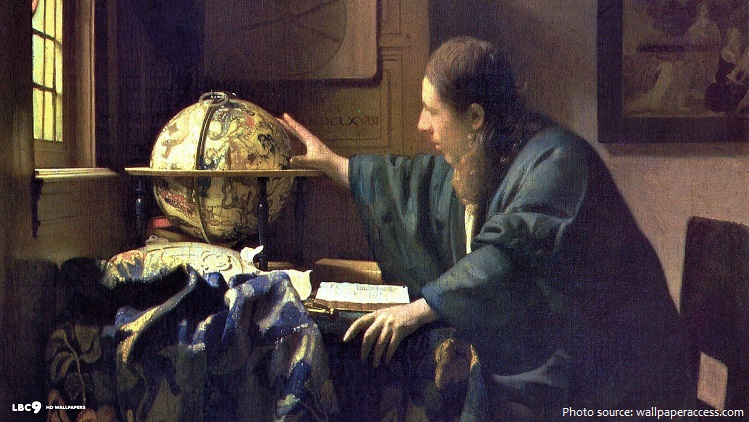
After his baptismal record at a local church, Vermeer seems to disappear for nearly 20 years. He likely had a Calvinist upbringing. His father worked as a tavern keeper and an art merchant, and Vermeer inherited both of these business upon his father’s death in 1652. The following year, Vermeer married Catherina Bolnes. Bolnes was Catholic, and Vermeer converted to her faith. The couple moved in with her mother, and would eventually have 11 children together.
On 29 December 1653, Vermeer became a member of the Guild of Saint Luke, a trade association for painters. The guild’s records make clear that Vermeer did not pay the usual admission fee. It was a year of plague, war, and economic crisis – Vermeer was not alone in experiencing difficult financial circumstances.
Despite the fact that he came from a Protestant family, he married a Catholic, Catherina Bolnes, in April 1653. Vermeer may have converted to Catholicism shortly before their marriage, a conversion suggested by the fact that some of his children were named after Catholic saints. His painting The Allegory of Faith reflects a Catholic belief in the Eucharist.
Vermeer’s early work concentrated on history paintings but, around 1656, he moved into the genre paintings he would produce for the rest of his career. The man seems to have painted with painstaking slowness, dissecting a whole color spectrum out of “white” light, executing near-perfect optical precision and reproducing the most minute details. This may have translated to “fussy” from another artist, but with Vermeer it all served to highlight the personality of the piece’s central figure(s).
Girl with a Pearl Earring is Vermeer’s oil painting , dated c. 1665. Going by various names over the centuries, it became known by its present title towards the end of the 20th century after the earring worn by the girl portrayed there. The work has been in the collection of the Mauritshuis in The Hague since 1902 and has been the subject of various literary and cinematic treatments.
It is unclear where and with whom Vermeer apprenticed as a painter. There is some speculation that Carel Fabritius may have been his teacher, based upon a controversial interpretation of a text written in 1668 by printer Arnold Bon.
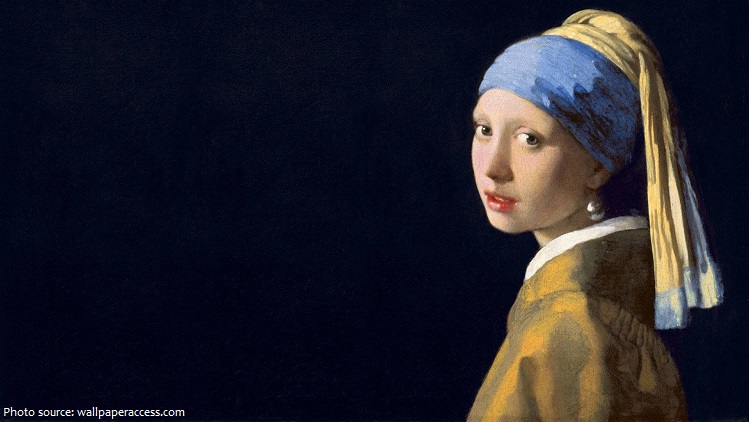
Vermeer worked slowly, probably producing three paintings a year, and on order. When Balthasar de Monconys visited him in 1663 to see some of his work, the diplomat and the two French clergymen who accompanied him were sent to a baker, probably Hendrick van Buyten, who owned one painting he was very proud of.
In 1672 a severe economic downturn (the “Year of Disaster”) struck the Netherlands. Not only did a French army under Louis XIV invade the Dutch Republic from the south (known as the Franco-Dutch War), but an English fleet, in the Third Anglo-Dutch War and two allied German bishops attacked the country from the east, trying to destroy its hegemony. Many people panicked, and shops and schools were closed. Some years passed before circumstances improved. The collapse of the art market damaged Vermeer’s business as both a painter and an art dealer, as his wife stated later. With a large family to support, Vermeer again was forced to borrow money.
When Vermeer died in 1675, he left behind a wife, 11 children, and enormous debts.
